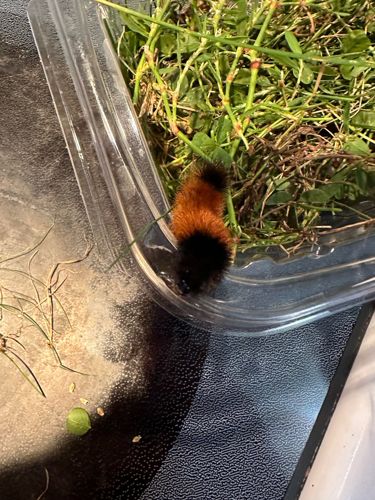Woolly Bear Caterpillar
Scientific Name: Pyrrharctia isabella
Order & Family: Lepidoptera, Erebidae (subfamily Arctiinae)
Size: Approximately 1.5 to 2 inches (3.8 - 5 cm) in length as a caterpillar.

Natural Habitat
Gardens, fields, woodlands, roadsides, and most temperate regions of the Northern Hemisphere, including the United States, Canada, and Mexico.
Diet & Feeding
Broad-leaved plants, including dandelions, plantain, clover, sunflowers, asters, and various grasses. They are generalist feeders.
Behavior Patterns
Woolly bear caterpillars are known for their distinctive bristly appearance and their habit of curling into a tight ball when disturbed, playing dead to protect their softer underside. They are often seen in autumn, searching for overwintering sites. They overwinter as caterpillars and then pupate in the spring, emerging as Isabella Tiger Moths.
Risks & Benefits
Generally harmless to humans. While their bristles can cause minor irritation or a rash for some sensitive individuals if handled, they are not venomous. They are considered beneficial as they help in plant decomposition and serve as a food source for birds and other animals. Their presence is often associated with the folklore of predicting winter severity based on the width of their black and reddish-brown bands, though this is not scientifically proven.
Identified on: 9/20/2025